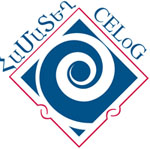Training on “Time Use Studies: method and data analysis”
Training on “Time Use Studies: method and data analysis”
Dates:
29/07/2013 / 12:00 AM
Location:
Alex Manukyan 1, YSU library building, 6th floor, room 602
Category:
Methodological trainings

Training on
“Time Use Studies: method
and data analysis”
and data analysis”
to be delivered by
Ewa Jarosz
(PhD Candidate at the Polish Academy of Sciences)
| Date: | July 29, 2013 |
| Time: | 10:00 – 14:30 |
| Location: | CRRC-Armenia, 52 Abovyan St., YSU 6th building, 3rd floor, room 305 |
| Language: | English |
Course description. Time use is an interdisciplinary field of study
dedicated to knowing how people allocate their time during an average day, between
various types of activities, as well as between working and leisure hours. The present
course addresses a number of time-use related issues – from historical
background and relation to social studies to gathering and analyzing time-use
data.
dedicated to knowing how people allocate their time during an average day, between
various types of activities, as well as between working and leisure hours. The present
course addresses a number of time-use related issues – from historical
background and relation to social studies to gathering and analyzing time-use
data.
 About the trainer. Ewa Jarosz writes her doctoral dissertation on
About the trainer. Ewa Jarosz writes her doctoral dissertation onTemporal Orientations, Time Use Patterns and Social Inequality. A 2013/2014
Fulbright fellow in the University of Maryland Center for Population Studies.
She authored and co-authored papers on time use patterns and social
stratification; she is also the principal investigator in quantitative research
projects within the time studies field. A member of International Sociological
Association and International Association for Time Use Research.
Registration. CLOSED
=====================================================================================
Course outline
Session 1: Introduction to Time Use Studies (TUS)
- Historical background. Early XX-th century studies of the patterns of
work and non-work (e.g. Bevans, 1913).
Internationalization and harmonization (Multinational Time
Use Survey, Szalai, 1965); - Rationale
behind using TUS versus standard survey research (e.g. Kahneman and Krueger, 2006; Gershuny,
2011; Michelson, 2006); - TUS
applicability in social studies. Overview of the topics: paid, unpaid and unregistered work (e.g. World
Bank reports, OECD), social inequality (e.g. Hesig, 2011; Sayer, 2005;
Burchardt, 2008), lifestyles and leisure (e.g. Gershuny, 2005; Sullivan and
Katz-Gerro, 2010), wellbeing (Gershuny, 2011), harmonized measures for
cross-national comparisons (e.g. Hirway, 1999), time as link between social and
natural/environmental sciences (e.g. Adam, 1994); - Datasets specificity. Files and file components (background, diary,
setting). Sequences in TUS: stacked (long & episodic)
and wide format data; - Measures used in TUS analysis. Simple and composite measures of time use. Optimal matching;
- Time
use network and resources. Introduction to the
available online time use resources (HETUS, MTUS, IATUR).
Coffee Break
Session 2: Time data analysis techniques using STATA
- Data management. Structure and coding. Data
format and data transformation; - Using time-use data in STATA. Stacked data conversion into episodes and wide format. Computing simple measures of time-use (e.g. episodes, aggregated duration of
selected activities, number of activities). Optimal
matching in STATA; - Composite
measures. Brief introduction
to R TraMineR and its functions (computing composite measures for time use)
Examples
of analyses from Armenian TUS and/or Polish TUS. Closing remarks
of analyses from Armenian TUS and/or Polish TUS. Closing remarks